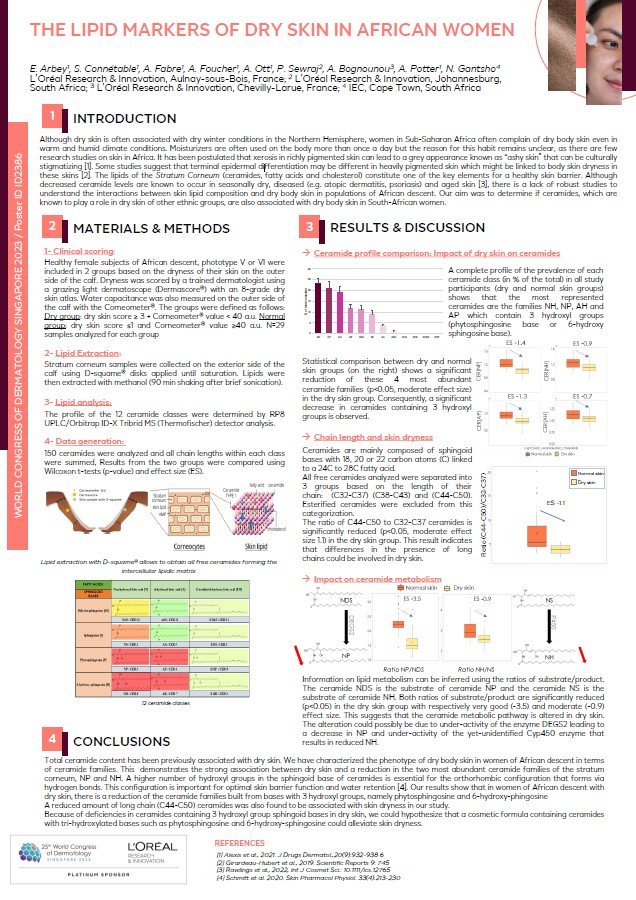L'Oréal Dermatological Beauty Pro is a digital community empowering healthcare professionals to improve their daily practice of dermatology through cutting-edge research, science and education on skin and hair care.
The lipid markers of dry skin in African women
E. Arbey, S. Connétable, A. Fabre, A. Foucher, A. Ott, P. Sewraj, A. Bognounou, A. Potter, N. Gantsho
- 10min
- Jul. 2023
- Supported by

INTRODUCTION
Although dry skin is often associated with dry winter conditions in the Northern Hemisphere, women in Sub Saharan Africa often complain of dry body skin even in warm and humid climate conditions. Moisturizers are often used on the body more than once a day but the reason for this habit remains unclear, as there are few research studies on skin in Africa. It has been postulated that xerosis in richly pigmented skin can lead to a grey appearance known as “ashy skin” that can be culturally stigmatizing. Some studies suggest that terminal epidermal differentiation may be different in heavily pigmented skin which might be linked to body skin dryness in these skins. The lipids of the Stratum Corneum (ceramides, fatty acids and cholesterol) constitute one of the key elements for a healthy skin barrier. Although decreased ceramide levels are known to occur in seasonally dry, diseased (e.g. atopic dermatitis, psoriasis) and aged skin, there is a lack of robust studies to understand the interactions between skin lipid composition and dry body skin in populations of African descent. Our aim was to determine if ceramides, which are known to play a role in dry skin of other ethnic groups, are also associated with dry body skin in South-African women.
